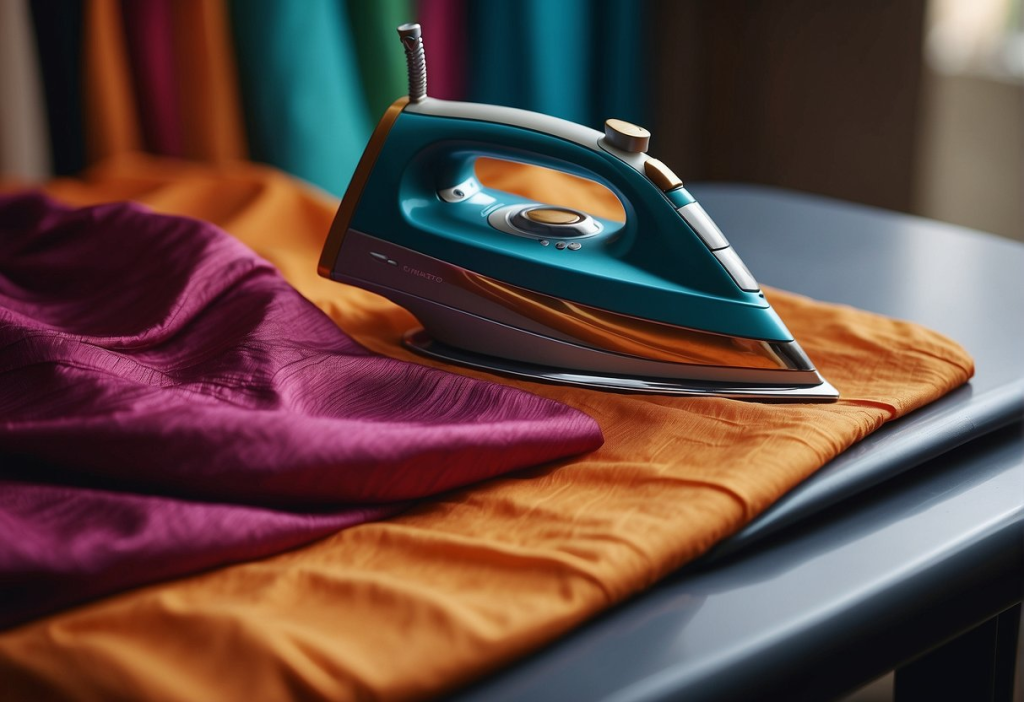
Sarees are a symbol of timeless elegance, tradition, and grace. Whether it’s a delicate silk, soft cotton, or shimmering chiffon, every saree requires special care to maintain its beauty and longevity. While most of us rely on dry cleaning services, washing sarees at home is not only cost-effective but also safer when done right. This guide will walk you through the steps to clean your sarees at home without damaging their texture, color, or fabric.
How to Dry Clean a Saree at Home Quickly

Dry cleaning is typically associated with professional cleaning using chemical solvents, but did you know you can achieve a similar effect at home for light stains and odor removal? Here’s how:
1. Use a Home Dry-Cleaning Kit
These are available in most supermarkets or online and include a stain remover, a cleaning cloth, and a heat-activated bag.
Steps:
- Spot-clean the stains using the provided stain remover.
- Place the saree in the dry-cleaning bag with the cleaning cloth.
- Toss it in the dryer on low heat for about 30 minutes.
- Hang the saree immediately to avoid wrinkles.
2. DIY Spot Dry Cleaning
If you don’t have a kit, you can make a gentle dry-cleaning solution at home:
Ingredients:
- 1 cup distilled water
- 1 tsp mild detergent or baby shampoo
- 1 tsp white vinegar
Steps:
- Mix ingredients in a spray bottle.
- Lightly spray the stained or sweaty areas.
- Blot gently with a clean white cloth.
- Do not rub – this can damage delicate threads.
This method is ideal for silk, georgette, and net sarees with embellishments that cannot be soaked in water.
How to Wash Saree at Home

Different fabrics need different techniques. Here’s a breakdown of how to wash different types of sarees at home safely and effectively.
1. Washing Cotton Sarees
Cotton sarees are the easiest to wash but may shrink or fade if not handled properly.
Steps:
- Soak the saree in cold water with a tablespoon of salt for 15–20 minutes before the first wash. This prevents color bleeding.
- Use mild detergent; avoid harsh powders or bleach.
- Gently hand wash in cold water.
- Do not wring the saree—squeeze gently.
- Rinse thoroughly and hang in a shaded area.
Tip: For printed or dyed cottons, always wash separately to avoid color transfer.
2. Washing Silk Sarees
Silk sarees are luxurious and need delicate care.
Steps:
- Never soak silk sarees for too long.
- Use a gentle detergent or baby shampoo.
- Wash one saree at a time in cold water.
- Swirl gently for a minute, rinse immediately.
- Add a few drops of vinegar in the final rinse for added shine.
- Wrap in a towel to absorb water—never wring.
- Dry flat in shade.
Caution: Avoid brushing or scrubbing. Always iron on a low heat setting with a cloth on top.
3. Washing Chiffon and Georgette Sarees
These sheer fabrics are prone to tearing if roughly handled.
Steps:
- Fill a basin with cold water and a few drops of a mild liquid detergent.
- Soak the saree for 3–5 minutes.
- Swirl gently and avoid squeezing.
- Rinse thoroughly in cold water.
- Use a towel to soak excess water.
Tip: Do not hang when wet—lay flat on a towel to dry to prevent stretching.
4. Washing Synthetic Sarees (Nylon, Polyester)
These are more durable and don’t need as much care.
Steps:
- Use lukewarm water and a regular detergent.
- Hand wash or use gentle machine cycle in a mesh laundry bag.
- Rinse well and dry in shade.
Tip: Don’t use fabric softeners—they can leave residues.
5. Washing Embroidered or Zari Sarees
These sarees should rarely be washed at home, but if needed:
Steps:
- Spot clean with a damp cloth and mild detergent.
- Do not soak in water.
- Air them out often to keep fresh.
- For a full clean, use a home dry-cleaning kit or take to a professional.
Additional Tips to Wash Saree at Home

Even with the right washing methods, there are some additional tips that can help extend the life of your sarees and keep them looking as good as new:
1. Test for Colorfastness
Before washing any saree for the first time, test if the dye runs:
- Dip a corner in water and blot with white tissue.
- If the color transfers, avoid washing—dry clean instead.
2. Avoid Harsh Sunlight
Sunlight can fade even the best-quality fabrics. Always dry sarees in the shade or indoors on a drying rack.
3. Ironing the Saree
Each fabric needs a different iron setting:
- Cotton: High heat with steam.
- Silk: Low heat, inside out.
- Synthetic: Low-medium heat.
Place a cotton cloth between the saree and iron to avoid direct heat damage.
4. Storing the Saree
After washing:
- Make sure it’s fully dry before storing.
- Fold neatly with acid-free tissue between folds.
- Store in a cotton or muslin cloth, not plastic.
- Air the saree once every 3–6 months to avoid musty smells.
Conclusion
Washing sarees at home may sound intimidating, especially when dealing with delicate fabrics, but with the right technique, it’s completely manageable. Understanding the fabric type and using appropriate cleaning and drying methods ensures your sarees remain vibrant and beautiful for years. Whether it’s a cherished silk heirloom or a casual cotton daywear saree, a little attention goes a long way in preserving its life and elegance.
Taking control of your saree care routine not only saves money but also builds a deeper connection with the cultural richness each saree carries. So the next time you spill something on your favorite saree, don’t panic—just follow these steps and treat it with the gentle love it deserves.
